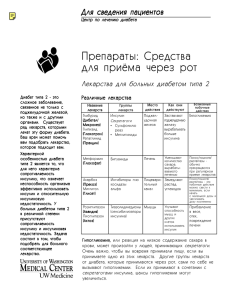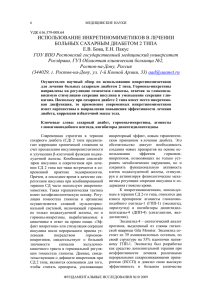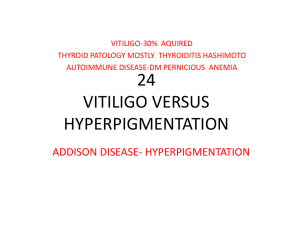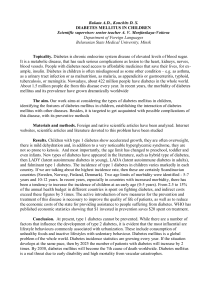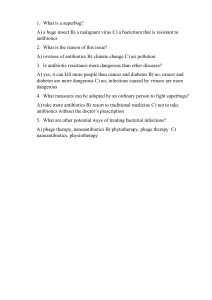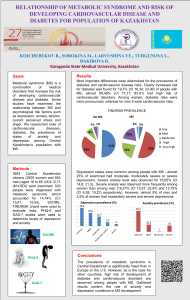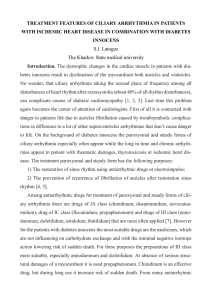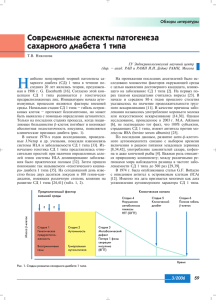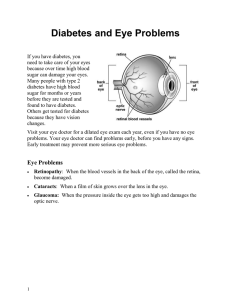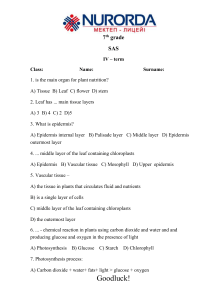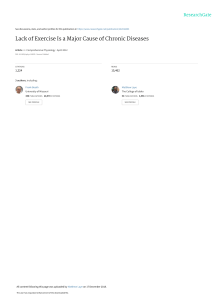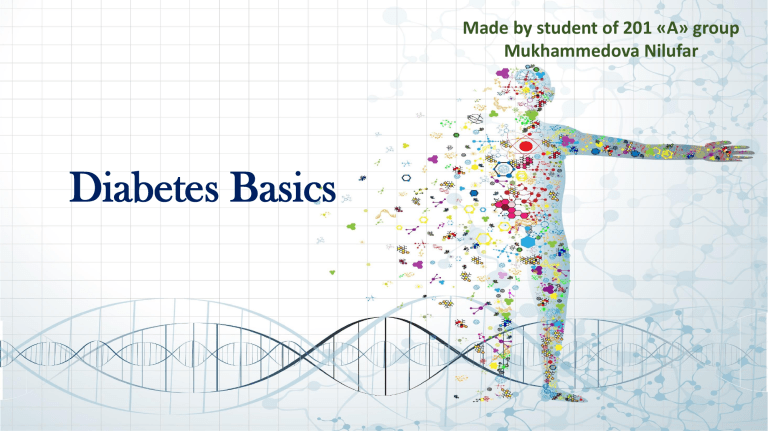
Made by student of 201 «А» group Mukhammedova Nilufar Diabetes Basics Understanding Diabetes Complex disease Digestion breaks down carbohydrates sugar (glucose) Sugar bloodstream Insulin moves sugar into cells for energy Body Function Without Diabetes Type 1 vs Type 2 Diabetes No insulin (key) means that sugar cannot enter the cell. Insulin (key) cannot unlock the cell door. Insulin resistance or inability of body to use insulin. Management Goal • Diabetes is managed but does not go away • Goal is to maintain a target glucose range Type 2 • Type 2 is the most common form of diabetes (DM). • In this form, the body does not produce enough insulin or the cells ignore the insulin that is produced. • Insulin is required by the body in order to use sugar. • Insulin takes the sugar from the blood into the cells. • When glucose builds up in the blood instead of going into cells, it can cause some problems: • In the short-term, your cells may be starved for energy • In time, high blood glucose may hurt your eyes, kidneys, nerves, or heart. Although diabetes occurs in people of all ages and races, some groups have a higher risk for developing type 2 diabetes than others: African Americans Latinos Native Americans Asian American/Pacific Islanders Aged population o Family history of diabetes o Overweight o Unhealthy diet o Physical inactivity o Increasing age o High blood pressure o Ethnicity o Impaired glucose tolerance (IGT)* o History of gestational diabetes o Poor nutrition during pregnancy Risk factors Symptoms of type 2 diabetes o Excessive thirst and dry mouth o Frequent urination o Lack of energy, tiredness o Slow healing wounds o Recurrent infections in the skin o Blurred vision o Tingling or numbness in hands and feet. Making Diabetes a Part of Life • Insulin/Medication • Regular Physical Activity • Food Intake • Maintaining a healthy body weight • Not smoking ОСЛОЖНЕНИЯ В случае недостаточного контроля сахарного диабета 2 типа повышается риск: инфаркта миокарда инсульта, заболевания почек, неврологических нарушений, нарушений зрения (включая слепоту), гангрены. How can doctor help you? Thanks for your attention!
